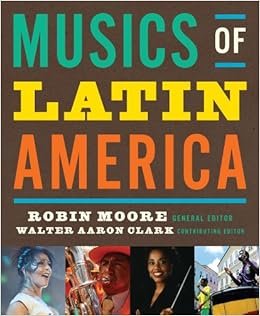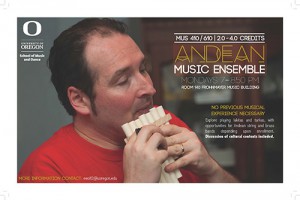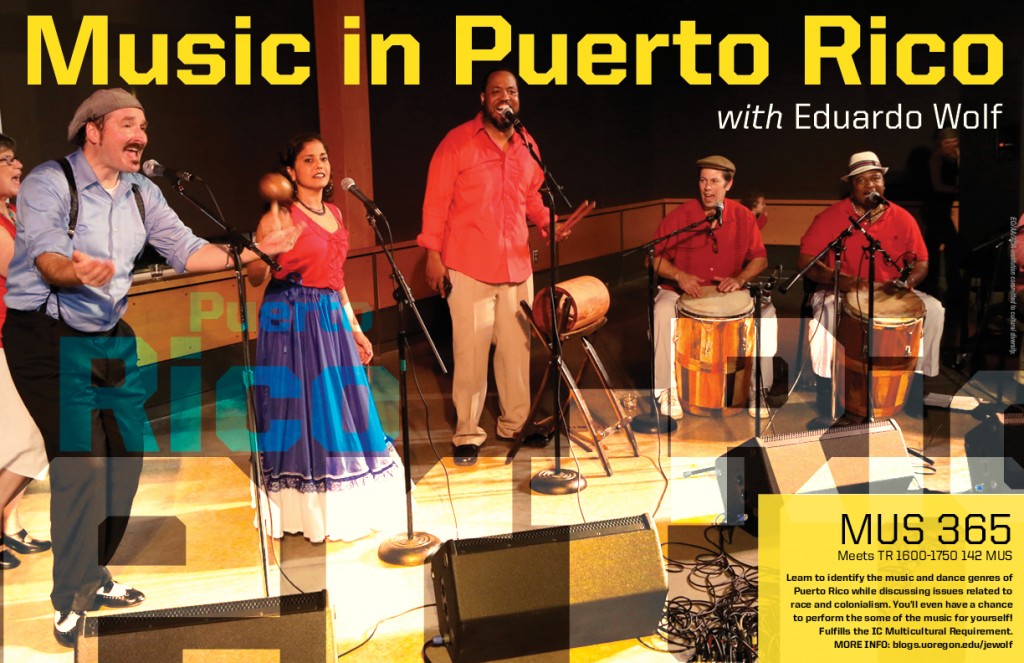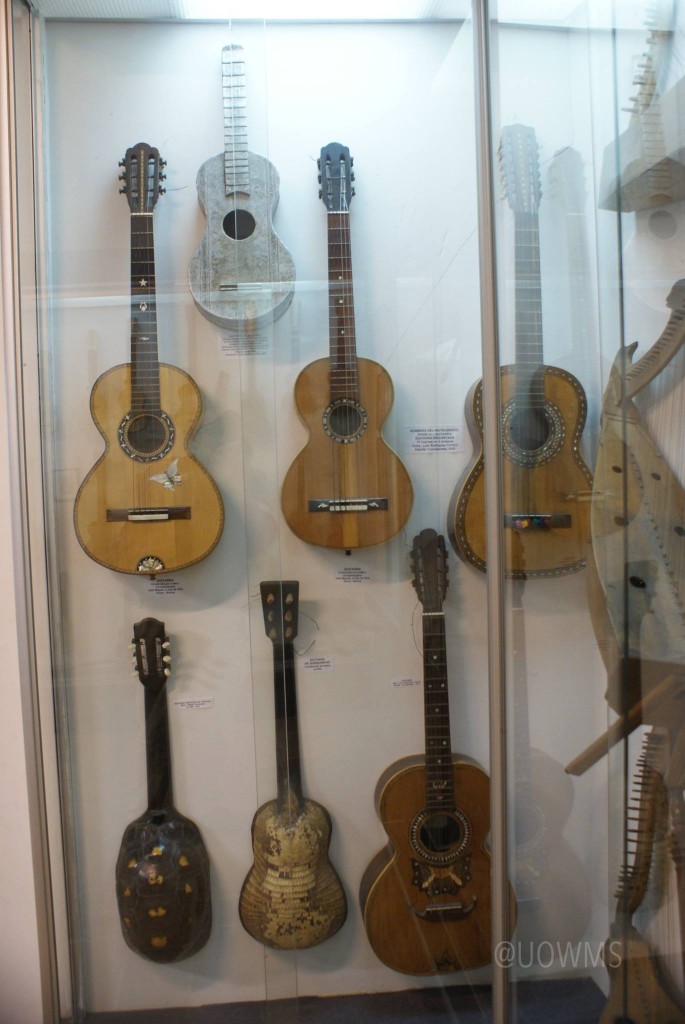MUS 451/551: Introduction to Ethnomusicology
TR 10:00-11:50 AM Room: 167 Frohnmayer Music Building
 Ethnomusicology is often defined as “the study of music in/as culture,” but what does that mean? This class begins with a brief overview of the history of the discipline (Rice) from its origins in U.S. cultural anthropology and German comparative musicology. We will then explore the key concepts one senior ethnomusicologist (Turino) has developed over the course of his career to understand musics as diverse as those found in fiestas patronales in the Andes, Bira ceremonies in Zimbabwe, and contra dances in the Midwest. Finally, we delve into a prize-winning ethnography on Ewe ritual (Friedson) to appreciate what an in-depth fieldwork study can produce. Graduate students participating in the class will be assigned additional readings, class preps, and more intensive writing projects. This course fulfills the IC (International Cultures) Multicultural Requirement.
Ethnomusicology is often defined as “the study of music in/as culture,” but what does that mean? This class begins with a brief overview of the history of the discipline (Rice) from its origins in U.S. cultural anthropology and German comparative musicology. We will then explore the key concepts one senior ethnomusicologist (Turino) has developed over the course of his career to understand musics as diverse as those found in fiestas patronales in the Andes, Bira ceremonies in Zimbabwe, and contra dances in the Midwest. Finally, we delve into a prize-winning ethnography on Ewe ritual (Friedson) to appreciate what an in-depth fieldwork study can produce. Graduate students participating in the class will be assigned additional readings, class preps, and more intensive writing projects. This course fulfills the IC (International Cultures) Multicultural Requirement.
Selected Texts Include:
Friedson, Steven M. 2009. Remains of Ritual: Northern Gods in a Southern Land. Chicago: University of Chicago Press.
Rice, Timothy. 2013. Ethnomusicology: A Very Brief Introduction. New York: Oxford University Press.
Turino, Thomas. 2007. Music as Social Life: the Politics of Participation. Chicago: University of Chicago Press.
MUS 607: Race in Latin American Music-Dance
R 3:30-6:20 PM Room: 142 Frohnmayer Music Building
 Time and time again, Latin American music and dance is described as the result of the “mixing” of three cultures: the African, European, and Native American. This perspective, however, oversimplifies the complex ways that ideas about race, music, and dance developed during Latin America’s colonial era and how they continue to interact today. In this class, we will explore the ways that racial ideologies developed in Latin America and how these ideologies influenced the attitudes towards the music-dance that now represent various Latin American nations. We will read about how scholars have used ideas about race to explain Latin American cultural processes and how music-dance plays a role in the contemporary cultural politics of ethnoracial recognition. Class is open to graduate students in all disciplines.
Time and time again, Latin American music and dance is described as the result of the “mixing” of three cultures: the African, European, and Native American. This perspective, however, oversimplifies the complex ways that ideas about race, music, and dance developed during Latin America’s colonial era and how they continue to interact today. In this class, we will explore the ways that racial ideologies developed in Latin America and how these ideologies influenced the attitudes towards the music-dance that now represent various Latin American nations. We will read about how scholars have used ideas about race to explain Latin American cultural processes and how music-dance plays a role in the contemporary cultural politics of ethnoracial recognition. Class is open to graduate students in all disciplines.
Selected Texts Include:
All reading and listening materials will be made available through the Canvas course site.



